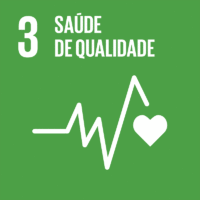Ciência_Iscte
Publicações
Descrição Detalhada da Publicação
Título Revista
Sports
Ano (publicação definitiva)
2024
Língua
Inglês
País
Suíça
Mais Informação
Web of Science®
Scopus
Google Scholar
Esta publicação não está indexada no Overton
Abstract/Resumo
Football players’ decision-making behaviours near the scoring target (finishing situations) emerge from the evolving spatiotemporal information directly perceived in the game’s landscape. In finishing situations, the ball carrier’s decision-making about shooting or passing is not an individual decision-making process, but a collective decision that is guided by players’ perceptions of match affordances. To sustain this idea, we collected spatiotemporal information and built a model to quantify the “Finishing Space Value” (FSV) that results from players’ perceived affordances about two main questions: (a) is the opponent’s target successfully reachable from a given pitch location?; and (b) from each given pitch location, the opposition context will allow enough space to shoot (low adversaries’ interference)? The FSV was calculated with positional data from high-performance football matches, combining information extracted from Voronoi diagrams (VD) with distances and angles to the goal line. FSV was tested using as a reference the opinion of a “panel of expert” (PE), composed by football coaches, about a questionnaire presenting 50 finishing situations. Results showed a strong association between the subjective perception scale used by the PE to assess how probable a shot made by the ball carrier could result in a goal and FSV calculated for that same situation (R2=.6706). Moreover, we demonstrate the accuracy of the FSV quantification model in predicting coaches’ opinions about what should be the “best option” to finish the play. Overall, results indicated that the FSV is a promising model to capture the affordances of the shooting circumstances for the ball carrier’s decision-making in high-performance football. FSV might be useful for more precise match analysis and informing coaches in the design of representative practice tasks.
Agradecimentos/Acknowledgements
--
Palavras-chave
Affordances,Degeneracy,Performance,Team synergies,Voronoi diagrams
Classificação Fields of Science and Technology
- Ciências da Computação e da Informação - Ciências Naturais
Registos de financiamentos
| Referência de financiamento | Entidade Financiadora |
|---|---|
| UIDB/50008/2020 | Fundação para a Ciência e a Tecnologia |
| UIDB/00447/2020 | Fundação para a Ciência e a Tecnologia |
Contribuições para os Objetivos do Desenvolvimento Sustentável das Nações Unidas
Com o objetivo de aumentar a investigação direcionada para o cumprimento dos Objetivos do Desenvolvimento Sustentável para 2030 das Nações Unidas, é disponibilizada no Ciência_Iscte a possibilidade de associação, quando aplicável, dos artigos científicos aos Objetivos do Desenvolvimento Sustentável. Estes são os Objetivos do Desenvolvimento Sustentável identificados pelo(s) autor(es) para esta publicação. Para uma informação detalhada dos Objetivos do Desenvolvimento Sustentável, clique aqui.

 English
English


